Splash Watercolor Secrets: Unlocking the Magic of Watercolor

Watercolor, with its ethereal colors and fluid nature, has captivated artists for centuries. Its unique ability to create vibrant, translucent effects has made it a beloved medium for capturing landscapes, portraits, and abstract concepts. However, mastering the art of watercolor often requires a deep understanding of its secrets. In this article, we will delve into the hidden techniques and principles that can unlock the true potential of watercolor, empowering you to create stunning works of art that dance with color and emotion.
The Dance of Water and Pigment
Understanding the relationship between water and pigment is essential for mastering watercolor. When a brush laden with water is dipped into paint, the water molecules penetrate the pigment particles, causing them to expand and dissolve. This mixture, known as watercolor paint, is then applied to paper, where the water begins to evaporate, leaving behind the concentrated pigment.
4.5 out of 5
| Language | : | English |
| File size | : | 8941 KB |
| Text-to-Speech | : | Enabled |
| Screen Reader | : | Supported |
| Enhanced typesetting | : | Enabled |
| Print length | : | 144 pages |
The amount of water used plays a crucial role in determining the transparency and intensity of the color. More water results in lighter, more translucent washes, while less water creates bolder, more opaque effects. Mastering the brushstroke allows artists to control the flow of water and pigment, creating subtle gradations and dynamic brushwork that brings life to their paintings.
Harnessing the Power of Washes
Washes are the foundation of watercolor painting, forming the base layers upon which other colors and details can be built. By applying multiple layers of thin, transparent washes, artists can gradually build up color and create a sense of depth and atmosphere.
Layering washes requires patience and precision. Each wash should be allowed to dry completely before applying the next, preventing the colors from running or blending together unintentionally. By controlling the water-to-pigment ratio, artists can achieve a wide range of effects, from delicate glazes to bold, saturated tones.
Unveiling the Magic of Granulation
Granulation is a fascinating phenomenon that occurs when certain pigments separate into individual particles as they dry. This results in a textured, granular effect that adds visual interest and depth to a painting. Pigments that exhibit granulation, such as Alizarin Crimson and Prussian Blue, create a unique sparkle and vitality that can enhance landscapes, abstracts, and portraits alike.
Artists can control the intensity of granulation by adjusting the water-to-pigment ratio. Less water produces more pronounced granulation, while more water dilutes the effect. Experimenting with different pigments and water ratios can lead to unexpected and visually stunning results.
Exploring the Beauty of Glazing
Glazing is a technique that involves applying thin, transparent layers of watercolor over previous layers that have already dried. This allows artists to build up color and create smooth, even transitions between shades. Glazing is particularly effective for creating realistic skin tones, as it allows for subtle variations in color and luminosity.
Glazing requires patience and a delicate touch. Each layer must be applied thinly and evenly, avoiding any brushstrokes or streaks that would disrupt the smooth transition. By experimenting with different glazes, artists can create complex, multi-dimensional paintings that capture the nuances of light and shadow.
Unveiling the Secrets of Wet-on-Wet
Wet-on-wet is a technique that involves applying watercolor to already-wet paper. This creates a fluid, ethereal effect as the colors blend and flow together, creating soft edges and atmospheric effects. Wet-on-wet is ideal for capturing the movement and energy of water, clouds, and other fluid subjects.
While wet-on-wet can be unpredictable, it can also be incredibly rewarding. By controlling the water content and brushstrokes, artists can manipulate the flow of color and create dynamic, expressive paintings that capture the essence of a moment.
Mastering the Art of Dry Brush
Dry brush is a technique that involves using a brush with very little water to apply dry pigment directly to the paper. This creates a unique, textured effect that resembles chalk or pastel. Dry brush is often used for adding highlights, creating texture, and capturing the details of foliage, hair, and other intricate elements.
Dry brush requires a light touch and precise brushwork. Too much water can result in muddy colors, while too little can make the pigment difficult to apply. By experimenting with different pressures and brushstrokes, artists can create a wide range of effects and textures, enhancing the depth and realism of their paintings.
Unveiling the Power of Masking Fluid
Masking fluid is a liquid latex that can be applied to paper to preserve certain areas from being painted over. This technique is particularly useful for protecting highlights, creating sharp edges, or preserving fine details. Masking fluid is applied with a brush or pen and dries to form a peelable film that can be easily removed once the painting is complete.
Masking fluid allows artists to experiment with complex compositions and achieve intricate effects that would otherwise be difficult to achieve. It is an essential tool for creating precise details and adding depth and dimension to a painting.
The Importance of Color Theory
Color theory plays a crucial role in watercolor painting, as it helps artists understand how colors interact and create harmony in a composition. Understanding the color wheel, color harmonies, and the effects of warm and cool colors allows artists to create visually appealing paintings that evoke emotion and convey a message.
Color theory can be applied to all aspects of watercolor painting, from choosing a color palette to blending colors and creating depth. By mastering the principles of color theory, artists can create paintings that resonate with the viewer on a deeper level.
Watercolor painting is a captivating art form that offers endless possibilities for expression and creativity. By understanding the hidden techniques and principles revealed in this article, you can unlock the true potential of watercolor and create stunning works of art that dance with color and emotion. Embrace the secrets of watercolor, experiment with different techniques, and let your imagination guide you on a journey of artistic discovery.
4.5 out of 5
| Language | : | English |
| File size | : | 8941 KB |
| Text-to-Speech | : | Enabled |
| Screen Reader | : | Supported |
| Enhanced typesetting | : | Enabled |
| Print length | : | 144 pages |
Do you want to contribute by writing guest posts on this blog?
Please contact us and send us a resume of previous articles that you have written.
 Best Book
Best Book Page Flip
Page Flip Bookshelf
Bookshelf Literary loom
Literary loom Chapter
Chapter Bookish
Bookish PageTurner
PageTurner Bibliophile
Bibliophile Story
Story Inkwell
Inkwell Bookworm
Bookworm Labyrinth
Labyrinth Plot Twist
Plot Twist Prose
Prose Paperback
Paperback Storyteller
Storyteller Sanctuary
Sanctuary Fiction
Fiction Reading
Reading Chronicle
Chronicle Read
Read Milton Glaser
Milton Glaser Andrew Delaplaine
Andrew Delaplaine Anna Goldenberg
Anna Goldenberg Cion Lee
Cion Lee Kitty Gorrell
Kitty Gorrell Juanitta Baldwin
Juanitta Baldwin Anjali Enjeti
Anjali Enjeti Andrew Carroll
Andrew Carroll E M Foner
E M Foner Holly Moss
Holly Moss Andrea Pflaumer
Andrea Pflaumer Zane Lamprey
Zane Lamprey Mike Epps
Mike Epps Jocelyn Harewood
Jocelyn Harewood Charles Bukowski
Charles Bukowski Robin Sloan
Robin Sloan Anne Billson
Anne Billson Ann Cleeves
Ann Cleeves Anna Badkhen
Anna Badkhen Robert Alan Brookey
Robert Alan Brookey W H Bartlett
W H Bartlett Kianna Alexander
Kianna Alexander Andy Southall
Andy Southall Ann Beaglehole
Ann Beaglehole Bathroom Readers Institute
Bathroom Readers Institute T J Demos
T J Demos Emiko Davies
Emiko Davies Daniella Weiss Ashkenazy
Daniella Weiss Ashkenazy John F Mullins
John F Mullins Andrew Bostock
Andrew Bostock Royal Horticultural Society
Royal Horticultural Society Nina Willner
Nina Willner David Blatner
David Blatner Val Wake
Val Wake Dave Clayton
Dave Clayton Dina Nayeri
Dina Nayeri Rhonda Mcknight
Rhonda Mcknight Stephanie Laurens
Stephanie Laurens Sarah Ferguson
Sarah Ferguson Jessica Alba
Jessica Alba Andrew Johnson
Andrew Johnson Andrew Tunstall
Andrew Tunstall Andrea Lee
Andrea Lee Donald Preziosi
Donald Preziosi Lynda Vaughn
Lynda Vaughn Jane Hamilton
Jane Hamilton Julie Klassen
Julie Klassen Emily Bingham
Emily Bingham Lonneke Geerlings
Lonneke Geerlings Andrew Mayne
Andrew Mayne Howard Thurston
Howard Thurston Marilyn Chase
Marilyn Chase Andrew M Dobell
Andrew M Dobell Charlie English
Charlie English Christine Leteux
Christine Leteux Guy Stern
Guy Stern Marie Force
Marie Force Katrina Mcpherson
Katrina Mcpherson Andrew Cunningham
Andrew Cunningham Erin Lewis Fitzgerald
Erin Lewis Fitzgerald Louise Egerton
Louise Egerton Duncan Heath
Duncan Heath Elisa Russell
Elisa Russell Marina Benjamin
Marina Benjamin Shawn Kelly
Shawn Kelly Josie Iselin
Josie Iselin Quincy Jones
Quincy Jones Kristina Liu
Kristina Liu Haley Hoover
Haley Hoover Anne C Heller
Anne C Heller Ed Duncan
Ed Duncan Michele Sullivan
Michele Sullivan George Kalmpourtzis
George Kalmpourtzis Julie Ann Walker
Julie Ann Walker Anna Pasternak
Anna Pasternak Emily Louise Howard
Emily Louise Howard Mia Sheridan
Mia Sheridan Angelico Chavez
Angelico Chavez Carlos Del Amor
Carlos Del Amor Eric Seale
Eric Seale D C Robinson
D C Robinson William W Johnstone
William W Johnstone Michiyo
Michiyo Anna Bartlett
Anna Bartlett Regine Abel
Regine Abel Waldemar Bogoras
Waldemar Bogoras Jeffrey Chipps Smith
Jeffrey Chipps Smith Crystal Daniels
Crystal Daniels Michael Asher
Michael Asher Christopher S Wood
Christopher S Wood Anna Stephens
Anna Stephens Andrew Hund
Andrew Hund Angus M Gunn
Angus M Gunn Fern Michaels
Fern Michaels Zachary Lamothe
Zachary Lamothe Anna Qu
Anna Qu Jason Kramar
Jason Kramar Ann Blockley
Ann Blockley Nicole Grotepas
Nicole Grotepas Drew Kwong
Drew Kwong Christopher Greyson
Christopher Greyson Lance Esplund
Lance Esplund Phoenix Collins
Phoenix Collins Stacey L Nash
Stacey L Nash Anita Brookner
Anita Brookner Anna Deavere Smith
Anna Deavere Smith Robin Koontz
Robin Koontz Jill Braden
Jill Braden Simon Schama
Simon Schama Andrew Forkner
Andrew Forkner Angela Hunt
Angela Hunt Angel Williams
Angel Williams Condoleezza Rice
Condoleezza Rice Jack Gernsheimer
Jack Gernsheimer Manuel Huitzilli
Manuel Huitzilli Stephen Kurkjian
Stephen Kurkjian Andreas Marks
Andreas Marks Erika Warmbrunn
Erika Warmbrunn Anne Bogart
Anne Bogart Monica Moody
Monica Moody Anne Pannecke
Anne Pannecke L J Martin
L J Martin Ann Aguirre
Ann Aguirre Andy Davidson
Andy Davidson Yan Lianke
Yan Lianke Denny S Bryce
Denny S Bryce Ann C Hall
Ann C Hall D C Palter
D C Palter John Patrick Bray
John Patrick Bray Angela Marie Moulton
Angela Marie Moulton Jane Akshar
Jane Akshar J D Robb
J D Robb J N Chaney
J N Chaney Erwin Panofsky
Erwin Panofsky Kat Chow
Kat Chow Andy Mcdermott
Andy Mcdermott Gary Faigin
Gary Faigin Edward Bellamy
Edward Bellamy Mary Robinette Kowal
Mary Robinette Kowal Laurinda Reddig
Laurinda Reddig C Y Croc
C Y Croc Andrew Meier
Andrew Meier Shellise Berry
Shellise Berry David Mamet
David Mamet Ray Scippa
Ray Scippa Nancy Princenthal
Nancy Princenthal Cissy Houston
Cissy Houston Gary Spetz
Gary Spetz Shel Perkins
Shel Perkins Gabrielle Moss
Gabrielle Moss Sam Fury
Sam Fury Scott Thybony
Scott Thybony John Driver
John Driver Jonathan Rauch
Jonathan Rauch Ryan White
Ryan White Tiffany L Warren
Tiffany L Warren Rickie Lee Jones
Rickie Lee Jones Carole Jackson
Carole Jackson Angie Daniels
Angie Daniels Andrew Bowden
Andrew Bowden Jean Ann Shirey
Jean Ann Shirey Stuart Campbell
Stuart Campbell Andrew Wilson
Andrew Wilson Sylvan Barnet
Sylvan Barnet Andrew Mcmahon
Andrew Mcmahon R G Richardson
R G Richardson Angus Johnstone
Angus Johnstone Anna Mocikat
Anna Mocikat Kate Frost
Kate Frost Padma Lakshmi
Padma Lakshmi Andy Mcnab
Andy Mcnab Natasha Solomons
Natasha Solomons Angelo Colorni
Angelo Colorni Raymond F Jones
Raymond F Jones Angela Gaughan
Angela Gaughan Catherine Berry
Catherine Berry David J Dennis Jr
David J Dennis Jr Andrea Pomerantz Lustig
Andrea Pomerantz Lustig Ann C Smith
Ann C Smith Danielle Geller
Danielle Geller Jason Sommer
Jason Sommer Emma Newman
Emma Newman Bill Fawcett
Bill Fawcett Ann Budd
Ann Budd Betty Arnett
Betty Arnett Nicholas Meyer
Nicholas Meyer Lisa Dickey
Lisa Dickey Anna Koliadych
Anna Koliadych Elaine Welteroth
Elaine Welteroth Andrew Marble
Andrew Marble Dominic Roskrow
Dominic Roskrow John C Cranham Dds
John C Cranham Dds Anna Todd
Anna Todd Henry Van Dyke
Henry Van Dyke Gavin Ambrose
Gavin Ambrose Angharad Lewis
Angharad Lewis Anna Kirtlan
Anna Kirtlan Lakisha Johnson
Lakisha Johnson Barbara Lasalle
Barbara Lasalle Anna M Mazur
Anna M Mazur Mari K Eder
Mari K Eder Shirley Anstis
Shirley Anstis Octavio Solis
Octavio Solis David Hampshire
David Hampshire Sylvia Day
Sylvia Day Andrea Jackson
Andrea Jackson Don Bluth
Don Bluth Jarrett Brandon Early
Jarrett Brandon Early Kevin Grange
Kevin Grange William J Lederer
William J Lederer Tom Sileo
Tom Sileo Kimberly Brock
Kimberly Brock Ronnie Smith
Ronnie Smith Andrew Vietze
Andrew Vietze Andy Herbach
Andy Herbach Sarah Herman
Sarah Herman Rachel Rubin Wolf
Rachel Rubin Wolf Lyonel Feininger
Lyonel Feininger Annabel Chase
Annabel Chase Andrew Graham Dixon
Andrew Graham Dixon Caroline James
Caroline James B Love
B Love Danielle Prescod
Danielle Prescod Heather Galler
Heather Galler Andreas Deja
Andreas Deja John M Olsen
John M Olsen Wendy Jelbert
Wendy Jelbert Anna Nadler
Anna Nadler Maxim Peter Griffin
Maxim Peter Griffin Annabelle Honess Roe
Annabelle Honess Roe Annie Dillard
Annie Dillard Elizabeth L Block
Elizabeth L Block Andrew Vaillencourt
Andrew Vaillencourt Pao Lor
Pao Lor E B Sledge
E B Sledge Tetiana Elert
Tetiana Elert Kindle Edition With Audio Video
Kindle Edition With Audio Video Anette Fischer
Anette Fischer Jenny Schwartz
Jenny Schwartz Angelina Jolie
Angelina Jolie Theodore Annemann
Theodore Annemann Terry Newman
Terry Newman Patricia Preciado Martin
Patricia Preciado Martin Legacy Russell
Legacy Russell Isabel Allende
Isabel Allende Bernie Marcus
Bernie Marcus Andrew Osmond
Andrew Osmond Barbara Sillery
Barbara Sillery Judy Omar
Judy Omar G J Younghusband
G J Younghusband Doris Kennedy
Doris Kennedy Billy Ray Belcourt
Billy Ray Belcourt Kent Babb
Kent Babb Kent Wong
Kent Wong Leslie Redhead
Leslie Redhead Ernest Hemingway
Ernest Hemingway Frank Kennedy
Frank Kennedy Christina Klein
Christina Klein Andrew Dewar
Andrew Dewar Jack Porter
Jack Porter Angela D French
Angela D French Kliph Nesteroff
Kliph Nesteroff Charles Reid
Charles Reid Margaret Wander Bonanno
Margaret Wander Bonanno Michelle Lee
Michelle Lee L T Ryan
L T Ryan Angie Cruz
Angie Cruz Ani Trime
Ani Trime Annalee Newitz
Annalee Newitz Diane Esguerra
Diane Esguerra Angie Grace
Angie Grace Steven Bleicher
Steven Bleicher John Charles Bennett
John Charles Bennett Fred Botting
Fred Botting Angus Donald
Angus Donald Anna Cavallo
Anna Cavallo Angie Martinez
Angie Martinez Angus Roxburgh
Angus Roxburgh Laura Lee
Laura Lee Sara Funduk
Sara Funduk J B Rosenberg
J B Rosenberg Harry Houdini
Harry Houdini Rita Moreno
Rita Moreno Ann Hoffman
Ann Hoffman David Loud
David Loud Walter Foster
Walter Foster Robert Ludlum
Robert Ludlum Mark Horrell
Mark Horrell J C Cooper
J C Cooper Shannon Leone Fowler
Shannon Leone Fowler Bruce Feiler
Bruce Feiler Paul Reps
Paul Reps Darrin Duford
Darrin Duford Anita Nipane
Anita Nipane Scott Baron
Scott Baron Christie Taylor
Christie Taylor Dorothy Hartley
Dorothy Hartley Royd Tolkien
Royd Tolkien Mark Henwick
Mark Henwick Fred Saberhagen
Fred Saberhagen Andrew Juniper
Andrew Juniper Andy Warhol
Andy Warhol Ruskin Bond
Ruskin Bond Caroline Linscott
Caroline Linscott Andrew Moriarty
Andrew Moriarty Anna Sherman
Anna Sherman Christopher Fowler
Christopher Fowler Ys Publishing
Ys Publishing Jeb Rosebrook
Jeb Rosebrook Godfrey Baldacchino
Godfrey Baldacchino Angela Wolf
Angela Wolf Anjelah Johnson Reyes
Anjelah Johnson Reyes Andy Keen
Andy Keen Kindle Edition
Kindle Edition Andy Mckell
Andy Mckell Anna Corba
Anna Corba Andrew Darby
Andrew Darby Luis Carlos Montalvan
Luis Carlos Montalvan Hamish Bowles
Hamish Bowles Angelique V Nixon
Angelique V Nixon Patrick Smithwick
Patrick Smithwick Sergio Bizzio
Sergio Bizzio Nintendo
Nintendo Susan Ross
Susan Ross Andrea Fazzari
Andrea Fazzari Liao Yiwu
Liao Yiwu James Canton
James Canton Martin Cruz Smith
Martin Cruz Smith Andrew Parker
Andrew Parker Yossi Maimon
Yossi Maimon Joseph E Persico
Joseph E Persico J Bright
J Bright Charla Krupp
Charla Krupp Dita Von Teese
Dita Von Teese Ted Kerasote
Ted Kerasote Kathryn Wilder
Kathryn Wilder Andrei Codrescu
Andrei Codrescu Anika Fajardo
Anika Fajardo Paul Robert Walker
Paul Robert Walker Graeme Davis
Graeme Davis Tim Slessor
Tim Slessor Taylor Michaels
Taylor Michaels Andrea Erickson
Andrea Erickson Ann Marks
Ann Marks Maggie O Farrell
Maggie O Farrell Jake Sherman
Jake Sherman Andrew Moor
Andrew Moor Ernesto Che Guevara
Ernesto Che Guevara Anna Starmer
Anna Starmer Andrew Sutton
Andrew Sutton Cornel West
Cornel West Rob Craig
Rob Craig Jack Lucas
Jack Lucas Nicholas Roerich
Nicholas Roerich Andrew Dickos
Andrew Dickos Scott Bartlett
Scott Bartlett Jeff Fletcher
Jeff Fletcher Josh Hanagarne
Josh Hanagarne Fawzia Koofi
Fawzia Koofi Terry Brooks
Terry Brooks Chris Weyers
Chris Weyers Kristina Kozak
Kristina Kozak Denys Johnson Davies
Denys Johnson Davies Frederic Lombardi
Frederic Lombardi David Nees
David Nees Bridget Alsdorf
Bridget Alsdorf Edward Seidensticker
Edward Seidensticker John Sugden
John Sugden Laura Bradbury
Laura Bradbury Clemantine Wamariya
Clemantine Wamariya Melissa Riddell
Melissa Riddell Andrew Karevik
Andrew Karevik Disamis Arcia Munoz
Disamis Arcia Munoz Harriet Welty Rochefort
Harriet Welty Rochefort Camil Flores
Camil Flores Dominique Auzias
Dominique Auzias Kien Nguyen
Kien Nguyen Larry Silverberg
Larry Silverberg Joshua Rivkin
Joshua Rivkin Siren
Siren Hilary Spurling
Hilary Spurling Liz Neves
Liz Neves Van Lu
Van Lu Tina Brown
Tina Brown Magic Guidebooks
Magic Guidebooks Michael Howard
Michael Howard Ben G Frank
Ben G Frank Alex Tannen
Alex Tannen Anna Paola Sanna
Anna Paola Sanna Glenn Adamson
Glenn Adamson Anna Jean Mayhew
Anna Jean Mayhew Anita Heiss
Anita Heiss Jamila Jasper
Jamila Jasper Anjan Chatterjee
Anjan Chatterjee Anna Salton Eisen
Anna Salton Eisen Farha Ghannam
Farha Ghannam Xander Black
Xander Black Jeremy Mercer
Jeremy Mercer Octave Uzanne
Octave Uzanne James Martin
James Martin James T Deshields
James T Deshields Andrew Porwancher
Andrew Porwancher Jane Dunnewold
Jane Dunnewold Roman Frister
Roman Frister Tony Wheeler
Tony Wheeler Andrei Besedin
Andrei Besedin Michael Tubbs
Michael Tubbs Sherry Ginn
Sherry Ginn Anna Hackett
Anna Hackett Michael Punke
Michael Punke Flavio Ferrari Zumbini
Flavio Ferrari Zumbini Andrew Grant
Andrew Grant Frederick Stirton Weaver
Frederick Stirton Weaver John Gilstrap
John Gilstrap C L Parker
C L Parker Dawnie Walton
Dawnie Walton Brian Shea
Brian Shea Marc Shapiro
Marc Shapiro Anna Malaika Tubbs
Anna Malaika Tubbs Diana Gabaldon
Diana Gabaldon Andrew Haslam
Andrew Haslam
Light bulbAdvertise smarter! Our strategic ad space ensures maximum exposure. Reserve your spot today!
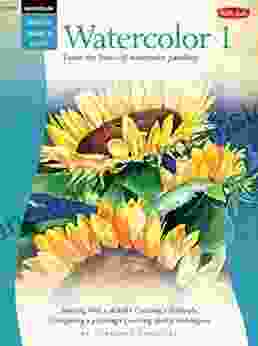
 John UpdikeLearn the Basics of Watercolor Painting: A Comprehensive Guide to Drawing and...
John UpdikeLearn the Basics of Watercolor Painting: A Comprehensive Guide to Drawing and...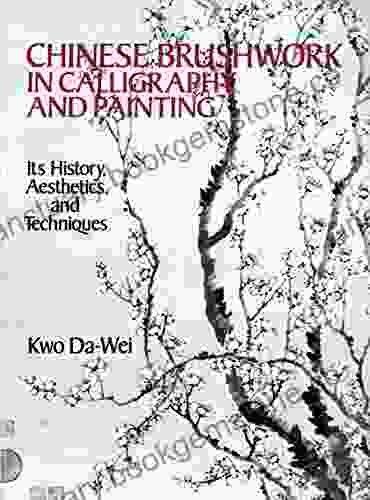
 Garrett PowellChinese Brushwork: A Comprehensive Guide to Its Techniques and Applications...
Garrett PowellChinese Brushwork: A Comprehensive Guide to Its Techniques and Applications... Eddie PowellFollow ·10.8k
Eddie PowellFollow ·10.8k Mark TwainFollow ·15k
Mark TwainFollow ·15k Greg FosterFollow ·9.3k
Greg FosterFollow ·9.3k Colton CarterFollow ·17.4k
Colton CarterFollow ·17.4k Adrian WardFollow ·9.6k
Adrian WardFollow ·9.6k Caleb LongFollow ·7.9k
Caleb LongFollow ·7.9k Curtis StewartFollow ·6k
Curtis StewartFollow ·6k Felix CarterFollow ·14.6k
Felix CarterFollow ·14.6k
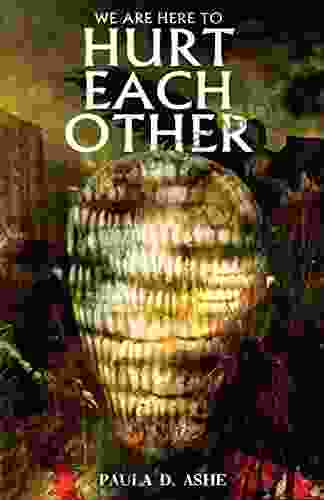
 Ethan Mitchell
Ethan MitchellWe Are Here To Hurt Each Other: A Deep Dive into the...
Yes, I can help you with that. Here is an...
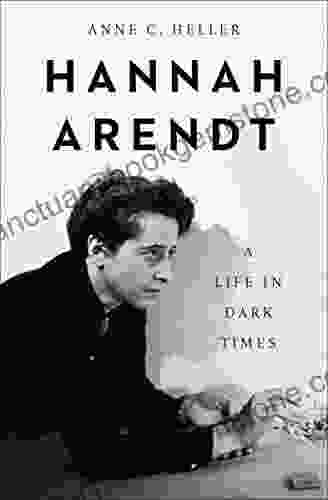
 Xavier Bell
Xavier BellHannah Arendt: A Life in Dark Times
Hannah Arendt was a...
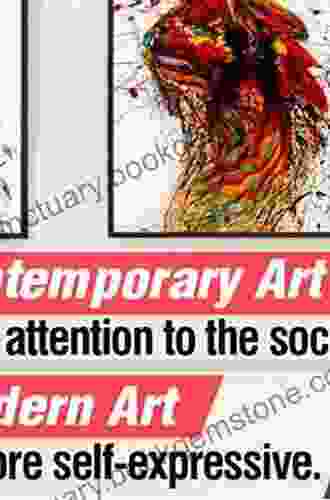
 Donovan Carter
Donovan CarterThe Art of Looking: A Comprehensive Exploration of Visual...
: The Power of...

 Terence Nelson
Terence NelsonUnveiling the Secrets of Moscow's Red Square: A Journey...
In the heart of Moscow,...
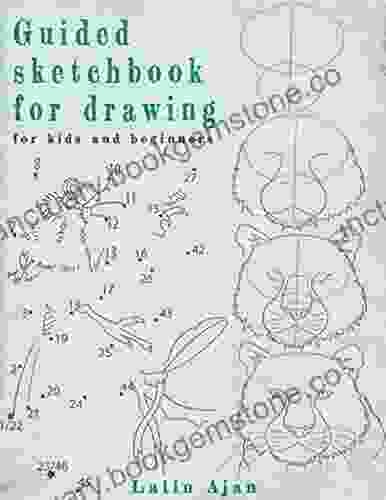
 Cruz Simmons
Cruz SimmonsDrawing Workbook for Kids and Beginners: An Enchanting...
: Unveiling the Magic of Drawing Drawing, an...
4.5 out of 5
| Language | : | English |
| File size | : | 8941 KB |
| Text-to-Speech | : | Enabled |
| Screen Reader | : | Supported |
| Enhanced typesetting | : | Enabled |
| Print length | : | 144 pages |









